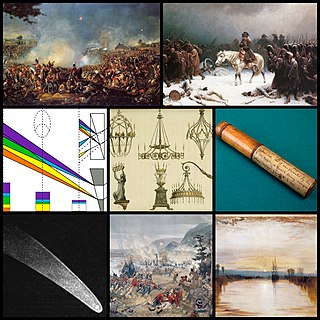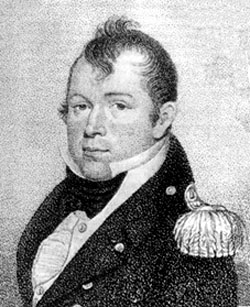Related Research Articles

James Monroe was an American Founding Father who served as the fifth president of the United States from 1817 to 1825. He was the last Founding Father to serve as president as well as the last president of the Virginia dynasty. He was a member of the Democratic-Republican Party, and his presidency coincided with the Era of Good Feelings, concluding the First Party System era of American politics. He issued the Monroe Doctrine, a policy of limiting European colonialism in the Americas. Monroe previously served as governor of Virginia, a member of the United States Senate, U.S. ambassador to France and Britain, the seventh secretary of state, and the eighth secretary of war.

William Henry Harrison was the ninth president of the United States, serving from March 4 to April 4, 1841, the shortest presidency in U.S. history. He was also the first U.S. president to die in office, causing a brief constitutional crisis since presidential succession was not then fully defined in the U.S. Constitution. Harrison was the last president born as a British subject in the Thirteen Colonies, and was a member of the Harrison family of Virginia. He was the grandfather of Benjamin Harrison, the 23rd U.S. president.

The War of 1812 was fought by the United States and its allies against the United Kingdom and its allies in North America. It began when the United States declared war on Britain on 18 June 1812. Although peace terms were agreed upon in the December 1814 Treaty of Ghent, the war did not officially end until the peace treaty was ratified by the United States Congress on 17 February 1815.

The 1810s was a decade of the Gregorian calendar that began on January 1, 1810, and ended on December 31, 1819.
Sackets Harbor is a village in Jefferson County, New York, United States, on Lake Ontario. The population was 1,450 at the 2010 census. The village was named after land developer and owner Augustus Sackett, who founded it in the early 1800s.

The Battles of Frenchtown, also known as the Battle of the River Raisin and the River Raisin Massacre, were a series of conflicts in Michigan Territory that took place from January 18–23, 1813, during the War of 1812. It was fought between the United States of America and a joint force of British and Native Americans near the River Raisin in Frenchtown.

Jesse Duncan Elliott was a United States naval officer and commander of American naval forces in Lake Erie during the War of 1812, especially noted for his controversial actions during the Battle of Lake Erie.
The results of the War of 1812, which was fought between the United Kingdom and the United States from 1812 to 1814, included no immediate boundary changes. The main result of the War of 1812 has been over two centuries of peace between the two countries.

The presidency of James Madison began on March 4, 1809, when James Madison was inaugurated as President of the United States, and ended on March 4, 1817. Madison, the fourth United States president, took office after defeating Federalist Charles Cotesworth Pinckney decisively in the 1808 presidential election. He was re-elected four years later, defeating DeWitt Clinton in the 1812 election. His presidency was dominated by the War of 1812 with Britain. After serving two terms as president, Madison was succeeded in 1817 by James Monroe, his Secretary of State and a fellow member of the Democratic-Republican Party.

During the War of 1812, the Indiana Territory was the scene of numerous engagements which occurred as part of the conflict's western theater. Prior to the war's outbreak in 1812, settlers from the United States had been gradually colonizing the region, which led to increased tensions with local Native Americans and the outbreak of Tecumseh's War. In 1811, Tecumseh's confederacy, formed in response to encroachment by White American settlers, was defeated by U.S. forces at the Battle of Tippecanoe. After the conflict broke out, most Native Americans in the region joined forces with the British Empire and attacked American forces and settlers in concert with their British allies.
The 1816 State of the Union Address was the last annual address given by President James Madison, the fourth president of the United States.
The 1815 State of the Union Address was given by the fourth president of the United States, James Madison. It was given to the 14th United States Congress on Tuesday, December 5, 1815, but not verbally by the president. The War of 1812 was over, and he said, "It is another source of satisfaction that the treaty of peace with Great Britain has been succeeded by a convention on the subject of commerce concluded by the plenipotentiaries of the two countries. In this result a disposition is manifested on the part of that nation corresponding with the disposition of the United States, which it may be hoped will be improved into liberal arrangements on other subjects on which the parties have mutual interests, or which might endanger their future harmony." He concluded with, "As fruits of this experience and of the reputation acquired by the American arms on the land and on the water, the nation finds itself possessed of a growing respect abroad and of a just confidence in itself, which are among the best pledges for its peaceful career."

The history of U.S. foreign policy from 1801 to 1829 concerns the foreign policy of the United States during the presidential administrations of Thomas Jefferson, James Madison, James Monroe, and John Quincy Adams. International affairs in the first half of this period were dominated by the Napoleonic Wars, which the United States became involved with in various ways, including the War of 1812. The period saw the U.S. double in size, gaining control of Florida and lands between the Mississippi River and the Rocky Mountains. The period began with the First inauguration of Thomas Jefferson in 1801. The First inauguration of Andrew Jackson in 1829 marked the start of the next period in U.S. foreign policy.
The 1795 State of the Union Address was delivered by the 1st president of the United States, George Washington, to a joint session of the Fourth United States Congress on December 8, 1795. This address covered a broad range of topics, including foreign relations, military affairs, and the domestic state of the Union.
The 1808 State of the Union Address was delivered by the third President of the United States, Thomas Jefferson, on November 8, 1808. This was Jefferson's final address to the Tenth United States Congress.
The 1809 State of the Union Address was delivered by the fourth President of the United States, James Madison, on November 29, 1809. This was Madison's first State of the Union address, delivered to the Eleventh United States Congress.
The 1811 State of the Union Address was delivered by the fourth President, James Madison, on November 5, 1811. Addressing the Twelfth United States Congress, Madison emphasized the ongoing diplomatic and economic challenges posed by Great Britain and France, both of which were violating U.S. neutral trading rights amidst the Napoleonic Wars.
The 1812 State of the Union Address was delivered by the fourth President of the United States, James Madison, on November 4, 1812. Addressing the Twelfth United States Congress, Madison reflected on the early stages of the War of 1812 and provided updates on the military, diplomatic, and economic situation facing the nation.
The 1818 State of the Union Address was delivered by the 5th President of the United States James Monroe to the 15th United States Congress on November 16, 1818. In this address, Monroe highlighted the prosperity the United States was experiencing, noting abundant harvests, flourishing commerce, and a surplus in revenue. He attributed these benefits to providence, stating: "For these inestimable blessings we can not but be grateful to that Providence which watches over the destiny of nations."
The 1820 State of the Union Address was delivered by the 5th president of the United States James Monroe to the 16th United States Congress on November 14, 1820.
References
- 1 2 "Joint Meetings, Joint Sessions, & Inaugurations | US House of Representatives: History, Art & Archives". history.house.gov. Retrieved 25 September 2024.
- 1 2 "James Madison - State of the Union Address -- 1813". The American Presidency Project. Retrieved 10 October 2024.